Phylogenetic Trees (WIP)
1/16
There's no tags or description
Looks like no tags are added yet.
Name | Mastery | Learn | Test | Matching | Spaced |
|---|
No study sessions yet.
17 Terms
Lamarck’s hypothesis
Theory of Inheritance of Acquired Characteristics - Animals gain specific characteristics throughout their lifetime to help them better deal with their environment. According to this theory, longer necks are then passed onto the next generation. This theory is not a correct view of the evolutionary process.
Darwin’s hypothesis
Darwin’s Theory of Natural Selection—Variation (genetic and phenotypic):
Variation of a Quantitative trait - due to several QTLs as well as epigenetic influences.
Key to Natural Selection - animal species exhibits characteristic variation at any given time.
In an environment favored towards animals with a specific characteristic, individuals can easily get more nutrition and will have increased fitness (survive and reproduce). The fit individuals will pass on the allelic variants corresponding their characteristic to their offspring. Despite this, there continues to be variation in a specific characteristic since DNA is constantly changing.
Phylogenetic Tree:
Hypothesis
Generated using DNA, morphology, or a combination
Any collectible data - mainly DNA
Framework to guide asking and answering evolutionary questions
A fully resolved tree has bifurcations from every node
Node, Lineage, Tip Taxon (Taxa)
Why are Phylogenetic Trees important?
They are a hypothesis on relatedness
They can help us understand what is ancestral (old) vs. derived (new)
How traits changed over time, old (early traits) vs. new (late traits)
They can help us understand how changes have occurred, starting from deep in the past towards the present.
They can help us distinguish between Homology and Homoplasy.
How to read Phylogenetic Trees:
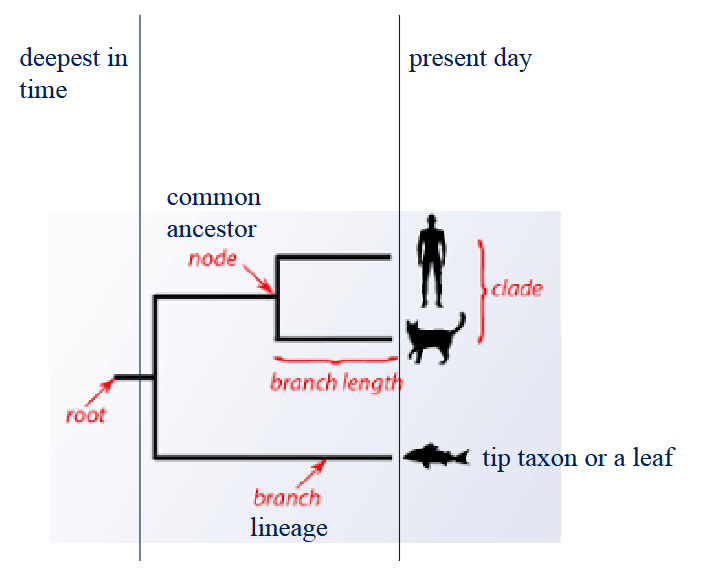
Outgroup in a Clade:
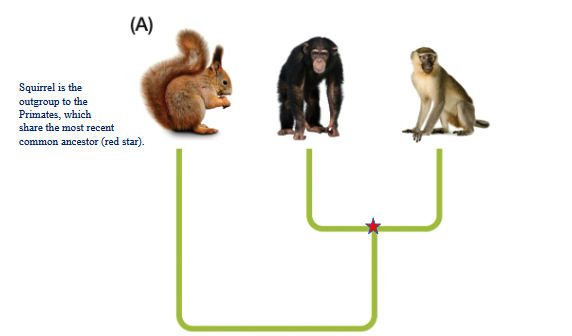
Cladogram:
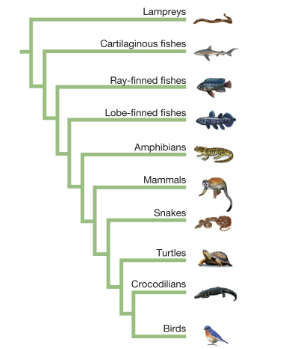

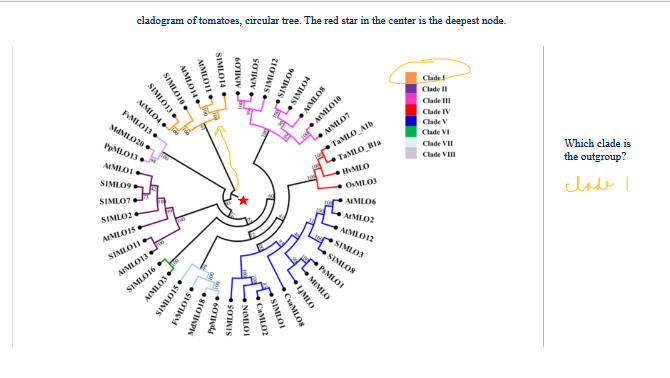
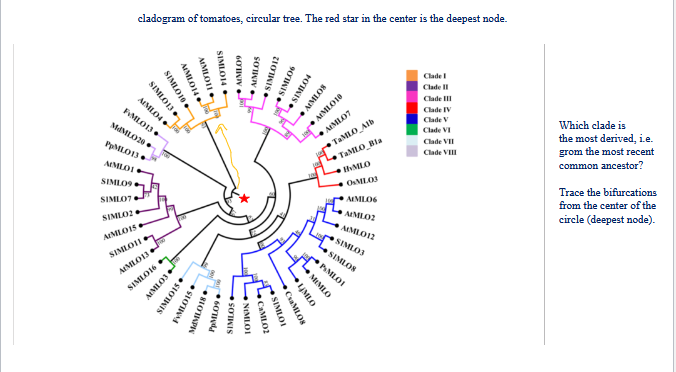
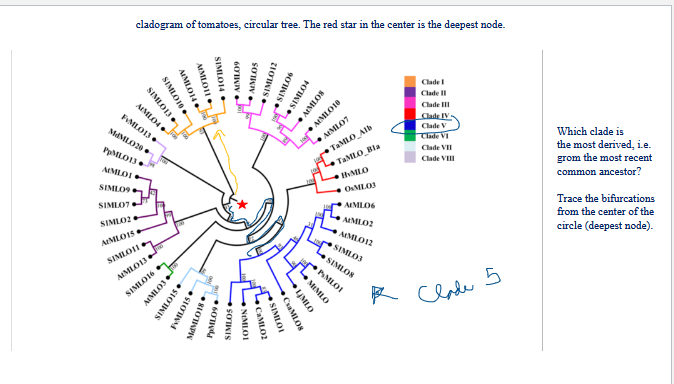
Phylogram:
Branch lengths differ after bifurcation from the common ancestor
The longer the line, the more changes on that lineage after the bifurcation.
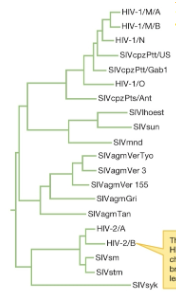
Chronogram:

Polytomy:
When a node has more than two descendants; not bifurcating
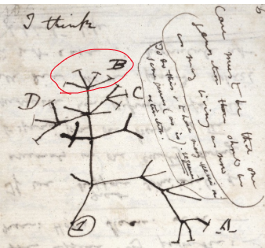
Pachyderms (yellow boxes):
Polyphyletic; not of one common ancestor
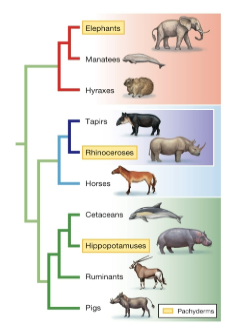
Three types of homologous characters:
Symplesiomorphy (ancestral)
Synapomorphy (with; shared and derived trait)
Autapomorphy (self, individual; trait unique to lineage)
Of these, only synapomorphies can be used to resolve phylogenetic relationships.
Homology:
Similarity due to shared common ancestry.
Binomial System:
Binomial system of scoring homologous traits used for constructing phylogenetic trees.
Traits that are ancestral (symplesiomorphies) are scored as 0
Traits that are derived and unique (autapomorphies) are scored as 1
Traits that are derived and shared (synapomorphies) are scored as 1
Homoplasy:
Homoplasy = big problem for phylogenetics
Homoplasies are traits that are NOT homologous. They are NOT scored as 0 or 1.
Homoplasies are traits that are similar in two or more taxa due to convergent evolution.
Phylogenetic trees are not accurately constructed if using homoplasies.